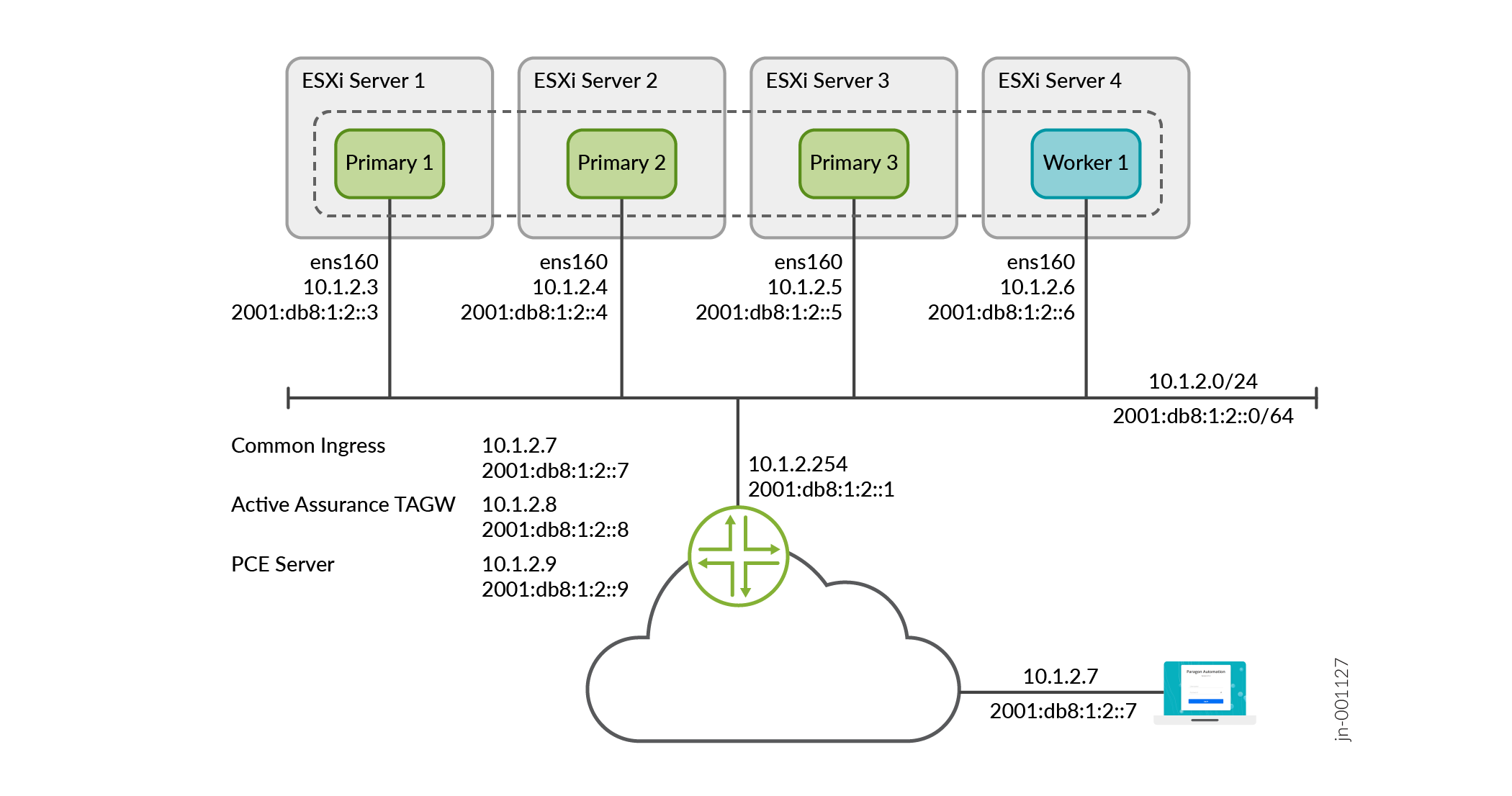- play_arrow Introduction
- play_arrow Install
- play_arrow Upgrade and Update
- play_arrow Backup and Restore
Paragon Automation Implementation
To determine the resources required to implement Paragon Automation, you must understand the fundamentals of the Paragon Automation underlying infrastructure.
Paragon Automation is a collection of microservices that interact with one another through APIs and run within containers in a Kubernetes cluster. A Kubernetes cluster is a set of nodes or virtual machines (VMs) running containerized applications.
A Kubernetes cluster comprises one or more primary and worker nodes.
Control plane (primary) node—The primary node performs the Kubernetes control-plane functions.
Compute (worker) node—The worker node provides resources to run the pods. Worker nodes do not have control-plane function.
The two types of nodes can be deployed separately or co-located in the same VM. A single node can function as both primary and worker if the components required for both roles are installed in the same node.
In Paragon Automation, by default, the primary nodes also serve as worker nodes.

You need to consider the intended system's capacity (number of devices to be managed, use cases, and so on), the level of availability required, and the expected system's performance, to determine the following cluster parameters:
- Total number of nodes in the cluster
- Amount of resources on each node (CPU, memory, and disk space)
- Number of nodes acting as primary and worker nodes
The amount of resources on each node are described later in this guide in Paragon Automation System Requirements.
Paragon Automation Implementation
Paragon Automation is implemented on top of a Kubernetes cluster, which consists of one or more primary nodes and one or more worker nodes. Paragon Automation is implemented as a multinode cluster. At minimum, three nodes that function as both primary and worker nodes and one node that functions as a worker-only node is required for a functional cluster.
The four-node cluster is the recommended and supported implementation.
This implementation not only improves performance but allows for high availability within the cluster:
Control plane high availability—The three nodes that function as both primary and worker nodes provide the required control plane redundancy. We do not support more than three primary nodes.
Workload high availability—For workload high availability and workload performance, you must have more than one worker. In Paragon Automation, the three nodes that function as both primary and worker nodes and the one node that serves as a worker-only node provide the required workload high availability.
Storage high availability—For storage high availability, all the nodes provide Ceph storage.
The Paragon Automation cluster remains functional when a single node fails and when the maximum latency between nodes is less than 25 ms.
To ensure that the cluster remains functional when a server fails, implement the cluster on four servers. The recommended implementation to maintain both server and node high availability is illustrated in Figure 2. This ensures that the cluster remains functional even if one of the servers fail.

In this release, single node failure and restart might cause inconsistencies in the device inventory.





















